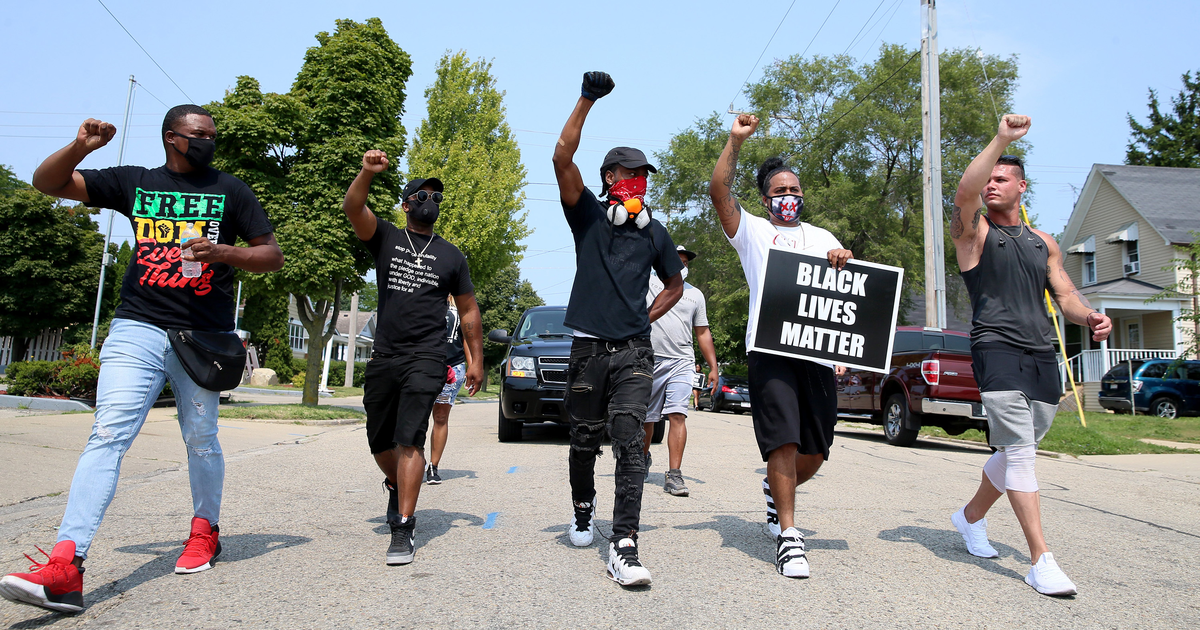
Racial trauma is what happens when a Black man like Jacob Blake is shot seven times in the back by a police officer. It’s how a Black person’s heart and mind may seize upon seeing the video of the recent attack in Kenosha, Wisconsin, or reading about it in the news. They may feel increasingly jittery, exhausted, or numb, fearful they or a loved one will meet the same fate.
These psychological wounds are both direct and vicarious: Someone who experiences racism or racially-motivated violence suffers, as do those who bear witness to such harm.
The concept of racial trauma, or race-based stress, is decades old but has emerged as a mainstream idea in the months since George Floyd‘s death. It affects people of color and Indigenous people, sometimes dramatically altering the path of their life. Some may be resilient, seek healing, recover, and even experience post-traumatic growth. Others will continue to struggle. Regardless of those individual outcomes, the pervasiveness of racial trauma means that it also shapes our relationships, culture, and politics, even if some haven’t known what to call it.
Like with any other mental health issue, naming racial trauma helps lessen its stigma for people who might otherwise feel weak or paranoid. Similar to post-traumatic stress disorder, race-based stress produces hyper-vigilance and a familiar set of symptoms, including increased heart rate, higher levels of the stress hormone cortisol, disrupted sleep, and irritable bowel syndrome.
An extreme incident, like being shot by a police officer, can create racial trauma. But so can a daily onslaught of microaggressions, like being tailed by a store employee while shopping, being mistaken for cleaning staff when you’re a senior partner, and being told you’re articulate. These range of experiences can set off the body’s fight-or-flight system to varying degrees. Yet unlike in many cases of PTSD, which stem from an isolated event, the stressor that triggers racial trauma may be ever-present. There’s no escaping it.
Another difference is how America collectively responds to racial trauma. When the government sent services members to war in Iraq and Afghanistan and some returned home only to experience emotional and psychological crises, the public acknowledged their sacrifice with sympathy and the government spent billions on researching PTSD and providing them with mental health treatment.
There is an argument for responding to racial trauma as if it’s also America’s responsibility to heal it through investment in research and treatment. People of color, particularly Indigenous and Black people, have fought for their lives and livelihood on their own soil for generations. They, too, have been sent into battle, just not in a war against a foreign adversary. Instead, their government permitted systemic racism to thrive in every aspect of American life.
Liberation from oppressive systems, and the mental health anguish they inflict, will look different for everyone. While racial trauma is not a defense or justification for destructive protesting tactics seen in Kenosha and elsewhere, it does provides context for such anger. In general, social justice work can create opportunities for healing from racial trauma, says Lillian Comas-Diaz, a clinical professor of psychiatry and behavioral sciences at the George Washington University School of Medicine. Comas-Diaz co-edited a special issue of American Psychologist on the subject of racial trauma and healing last year.
“Who wants to live in a society where so many people routinely experience racial trauma?”
The question before America today, she says, is: “Who wants to live in a society where so many people routinely experience racial trauma?”
The answers to that question are becoming clearer. Black people in Kenosha march in the streets because they refuse to accept the persistent threat of discrimination or violence in their lives. Allies who march with them see the injustice and put their bodies on the line in their defense. People who support the cause from afar understand that racial trauma is unfair and untenable.
Yet there are those who deny or downplay racial trauma, even as one video after the next offers a chilling depiction of why Black people might live with enduring fear. Some are even willing to use force and violence to thwart protests under the guise of protecting law and order.
On Tuesday evening in Kenosha, protesters were met by armed civilians brandishing firearms. One of them, a 17-year-old boy, was charged with homicide after allegedly shooting two protesters to death. Video of the Kenosha police caught officers welcoming the white vigilantes. Considering this in the context of Blake’s shooting also elicits a kind racial trauma.
To learn about and name racial trauma at this moment in American history is to understand that countless people of color have long been denied their basic dignity and human rights and have paid, at the very least, with their mental health.
If you want to talk to someone or are experiencing suicidal thoughts, Crisis Text Line provides free, confidential support 24/7. Text CRISIS to 741741 to be connected to a crisis counselor. contact the NAMI HelpLine at 1-800-950-NAMI, Monday through Friday from 10:00 a.m. – 6:00 p.m. ET, or email info@nami.org. Here is a list of international resources.
